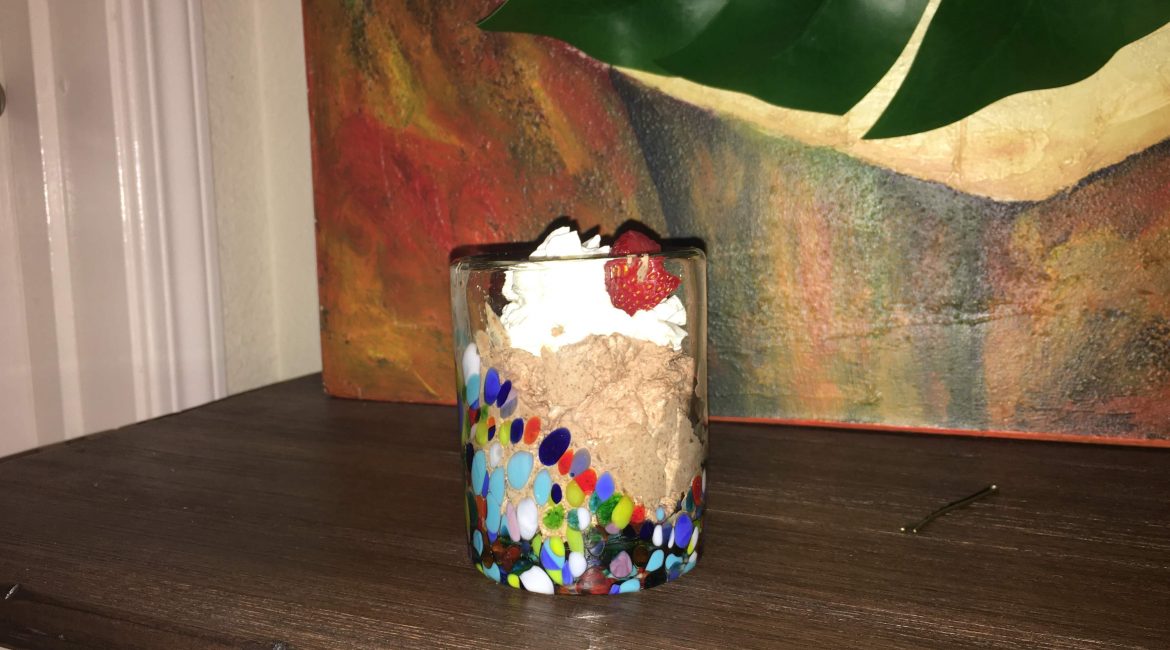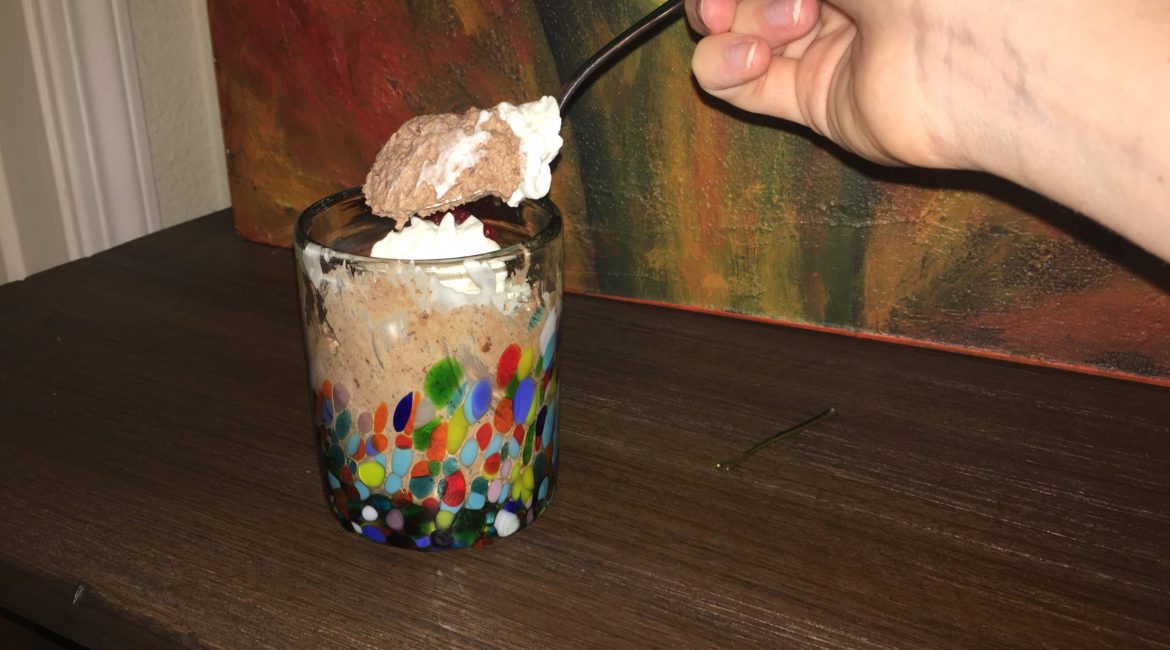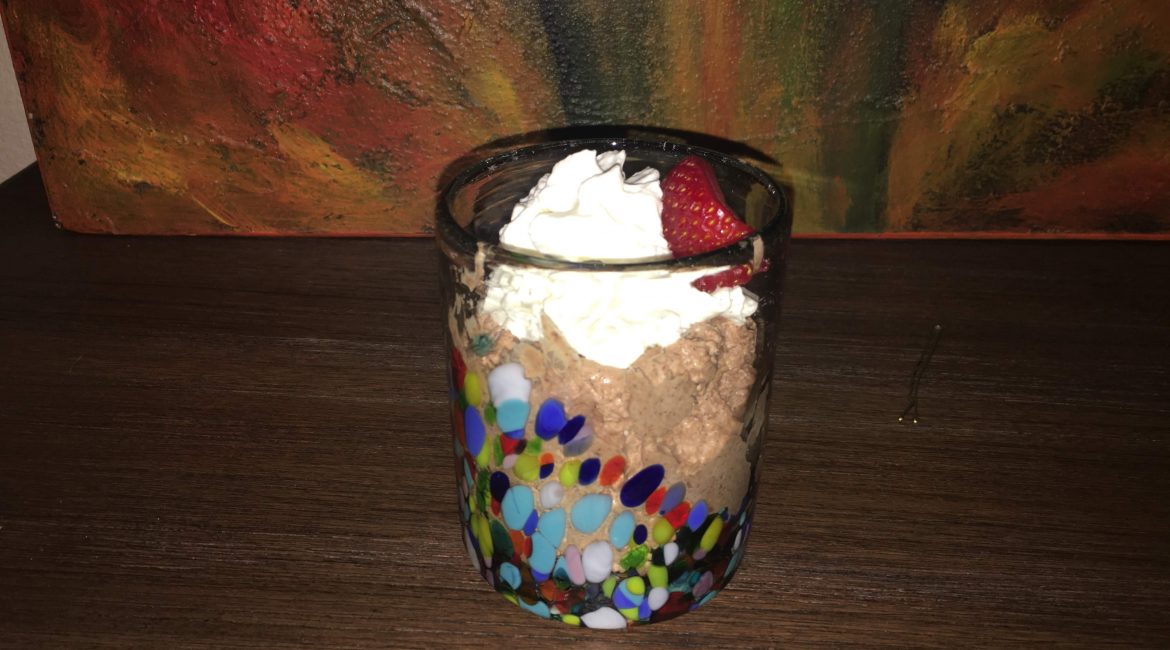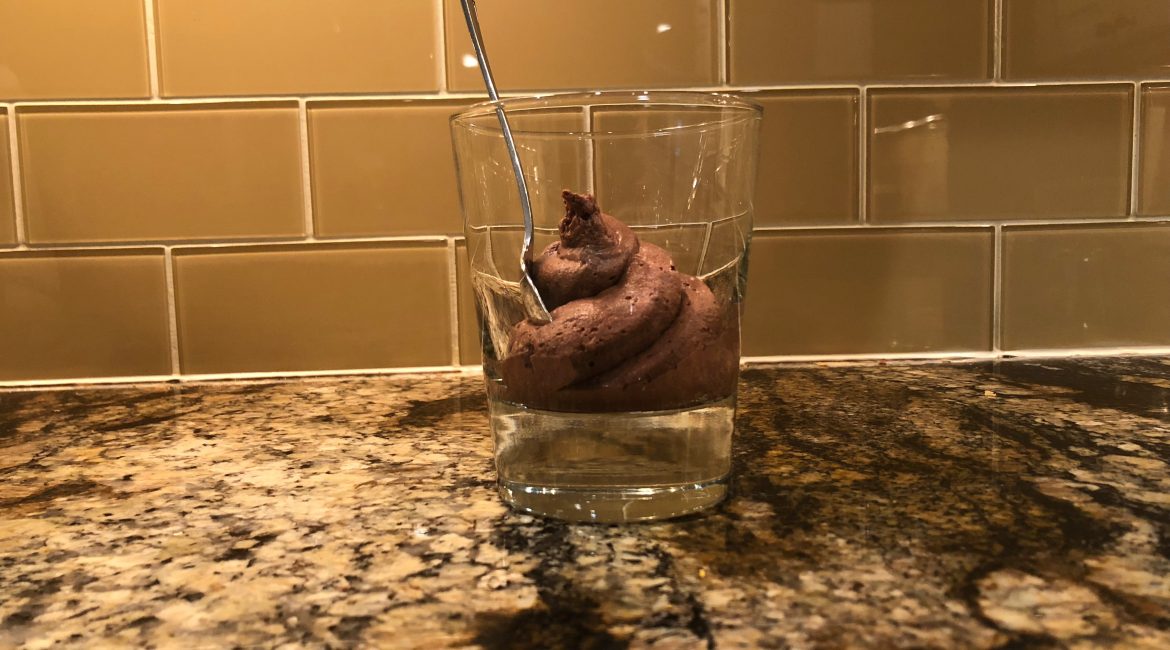If you are a fan of quick and easy recipes with a delicious result, then this mousse recipe is perfect for you! I had never made chocolate mousse before I tried this recipe, and the simplicity amazed me. All you need to know how to do is whip up a good foam!
But how exactly do you whip up a good foam? Well, the answer to that is a little more complicated than you might expect.
A dairy foam is formed using a cream of no less than 30 percent fat (any lower and the cream will not foam) (Wolke, 2005). Whipping creams are able to form stable foams thanks to the unique properties of the proteins found in milk. These proteins are able to stick to that air-water interface found on the surface of a bubble and form a layer (Vega et al., 2012). Once this layer is formed on the surface of an air bubble, the proteins create a flexible network across bubbles that stabilizes and holds the foam in its shape (Vega et al., 2012).
Dairy foam will be combined with another foam, an egg white foam, to produce an end result that is as light and airy as possible. Eggs whites can be beaten into a foam that can expand the egg whites 6-8 times in volume (“Foam”). The hydrophic regions of egg whites facilitate the incorporation of air bubbles by coating the air and allowing them to become incorporated in the protein interface as it denatures (Lomakina & Míková, 2011). There are some important factors to keep in mind that will inhibit the foaming. Fat is the most common of these. The properties of fat conflict with the delicate structure of the protein interface (“Foam”). To avoid the interruption of fat on the foaming process, make sure to exclude any egg yolk and to thoroughly clean baking materials.
And how to we generate the air bubbles in the first place? In the case of our recipe, we used mechanical agitation, which is when you use a whisk or a hand mixer to whip the air into the cream, creating whipped cream and whipped egg whites (Vega et al., 2012). In both cases, we want to whip the cream and the egg whites until they form stiff peaks so that our foam is as full of air as we can get it. This creates the desired mouth feel of the mousse: creamy, airy, and light.
If you are making the dairy-free version of this mousse, then you will be using coconut cream instead of dairy cream. Coconut cream will be harder to whip into those nice, stiff peaks because it only contains between 20 and 29 percent fat, which is lower than the percent fat necessary to get a good whipped cream going (“The Chemistry of Coconut Milk and Cream,” 2017). We tried to make the recipe with coconut cream, and our first attempt did not turn out successfully. Using some tips we included in the notes of this recipe, the second attempt turned out nicely.
Another question you might be asking yourself is if you can substitute cocoa powder for chocolate in this recipe. For flavor, yes, you probably could. Cocoa powder actually has a stronger initial chocolate flavor than chocolate because it is almost entirely cocoa solids and is therefore lacking the cocoa butter fats that weaken the burst of chocolate flavor (Rees, 2017). However, we would not suggest completely substituting chocolate for cocoa powder because the fats found in cocoa butter really lend this recipe the creamy, silky mouthfeel that is so desirable in a mousse. We did experiment by adding in a tablespoon of cocoa powder to the 5 ¼ oz chocolate, and this did give the recipe a little extra chocolate flavor. If you are looking for a way to deepen that chocolatey punch, definitely try adding a tablespoon of cocoa powder to the chocolate as it is melting!
For an easy-to-follow recipe card, please check here.
Ingredients
- Optional
- Dairy Free Mousse
Instructions
-
Melt the bittersweet chocolate in a bain marie or a double boiler. Stir the chocolate until it is melted and then turn off the heat and let it stand.
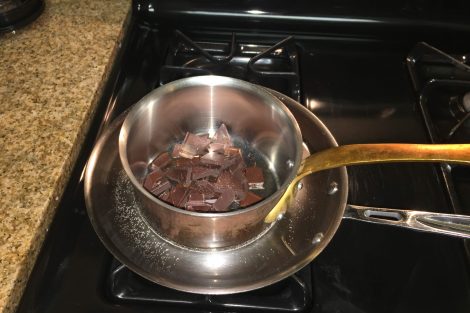
-
In a bowl over ice, beat the heavy whipping cream until it forms stiff peaks. Set aside.
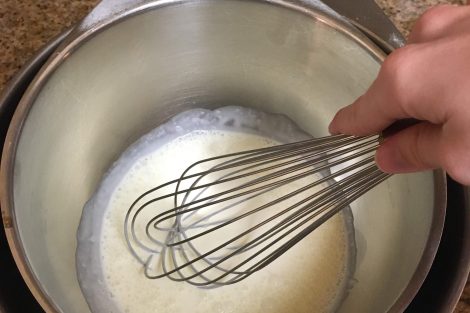
-
Use a mixer to whip the egg whites to soft peaks. Then, gradually add in the sugar and continue whipping until the egg whites form firm peaks.
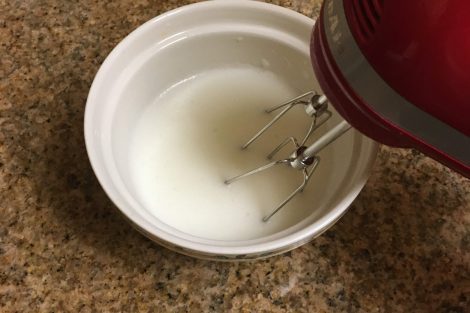
- Remove the chocolate from the bain marie and fold in the egg whites all at once using a rubber spatula.
-
Once the egg whites have been almost completely incorporated, fold in the whipped cream.
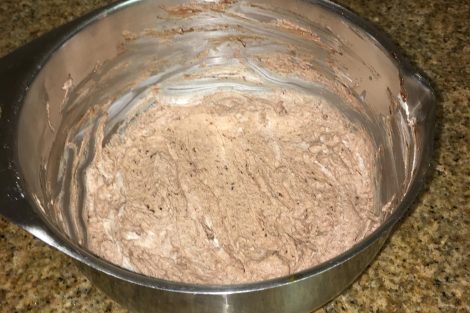
- Cover the mousse and refrigerate until set (about an hour), and then serve! Dairy Free Substitue
-
Just as the original recipe start by melting the bittersweet chocolate in a bain marie or a double boiler. Stir the chocolate until it is melted and then turn off the heat and let it stand.
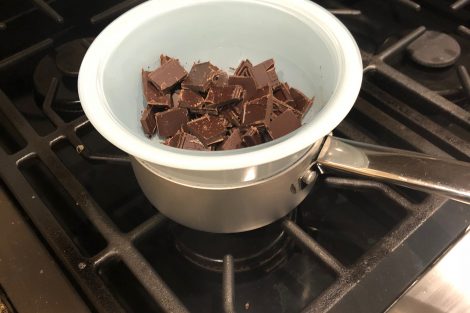
-
Separate the coconut cream from the milk/water by draining.
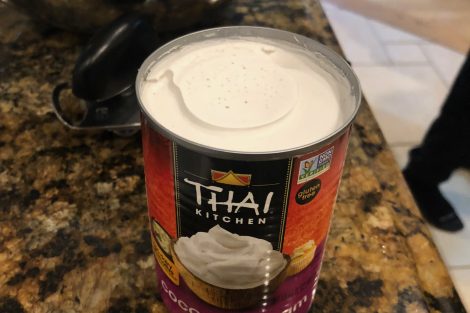
-
In a bowl over ice, beat the coconut cream until it forms stiff peaks. Set aside.
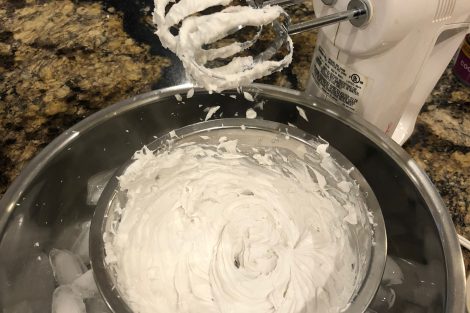
-
Beat the egg whites to soft peaks. Then, gradually add in the sugar and continue whipping until the egg whites form stiff peaks.
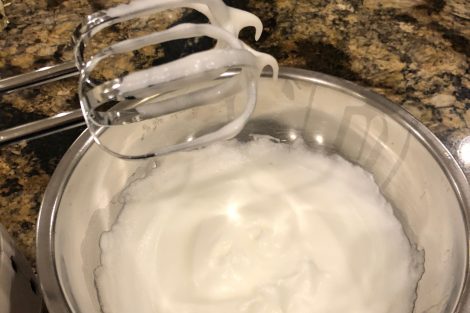
- Remove the chocolate from the bain marie and fold in the egg whites all at once using a rubber spatula.
-
Once the egg whites have been almost completely incorporated, fold in the whipped cream.
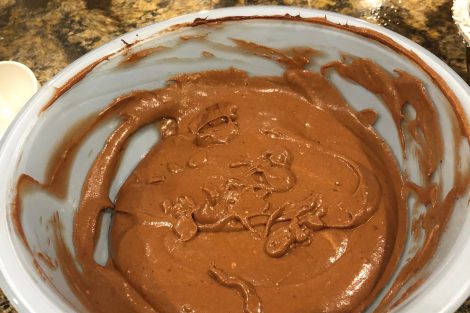
-
Cover the mousse and refrigerate until set (about an hour), and then serve!
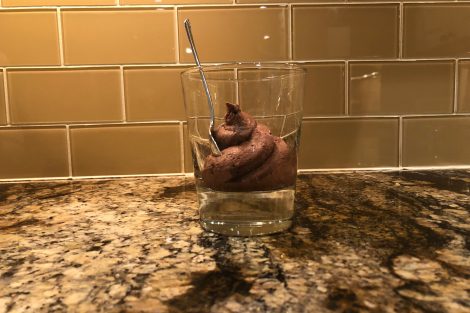
Notes
For an extra burst of flavor, try combining 1 tablespoon of 100% cocoa powder into the bittersweet chocolate as it is melting. It'll add a little extra chocolate flavor! If you can't find bittersweet chocolate, use the substitution of 1 ounce of semisweet chocolate and 1/4 teaspoon cocoa powder for every ounce of bittersweet chocolate needed ("Bittersweet chocolate").
If you are looking for a dairy-free alternative to the traditional mousse recipe, try using 14 oz of coconut cream instead of heavy whipping cream. We were unsuccessful in our first attempt so this requires some extra tips. Make sure to use full fat coconut cream that does not contain guar gum ("Coconut Whipped Cream," 2019). Because of shortages in grocery stores we had to use coconut milk rather than coconut cream in our first attempt, sacrificing much of the fat content needed from the coconut cream. It is also extremely important to refrigerate overnight ("Coconut Whipped Cream," 2019). The first time we tried to make the dairy free version of this recipe, we purchased the ingredients the day we made the mousse and did not have time to refrigerate for more than a few hours. The refrigeration process is crucial because it hardens the coconut cream, squeezing out the coconut milk/water ("Coconut Whipped Cream," 2019). This allows the fattier and whip-able cream to be easily separated from the milk/water by draining ("Coconut Whipped Cream," 2019). Pour out discard or save the milk/water for other recipes, like smoothies ("Coconut Whipped Cream," 2019). Once you have the coconut cream, it can be whipped with an electric beater. It is harder and more likely to separate into chunks than whipping cream, so the whipping process does take some extra effort. Let us know how it works for you!
The original recipe can be found here.
All photographs used where taken by the creators of the post, Anna Harvey and Cammie Charron.
Refrences
Bittersweet chocolate. (n.d.). Retrieved April 21, 2020, from https://www.gourmetsleuth.com/ingredients/detail/bittersweet-chocolate
Coconut Whipped Cream. (2019, October 22). Retrieved April 21, 2020, from https://www.gimmesomeoven.com/coconut-whipped-cream-recipe/
Flay, B. (n.d.). Dark Chocolate Mousse. Retrieved from https://www.foodnetwork.com/recipes/bobby-flay/dark-chocolate-mousse-recipe-1917102
Foam. (n.d.). Retrieved April 21, 2020, from https://www.incredibleegg.org/eggcyclopedia/f/foam/
Lomakina, K., & Míková, K. (2011). A Study of the Factors Affecting the Foaming Properties of Egg White; a Review. Czech Journal of Food Sciences, 24(No. 3), 110–118. doi: 10.17221/3305-cjfs
Rees, N. (2017, April 19). Chocolate vs. Cocoa Powder. Retrieved April 27, 2020, from https://www.finecooking.com/article/chocolate-vs-cocoa-powder
“The Chemistry of Coconut Milk and Cream.” (2017, March 11). Retrieved April 16, 2020, from https://coconuthandbook.tetrapak.com/chapter/chemistry-coconut-milk-and-cream
Vega, C., Ubbink, J., van, D. L. E., & Vega, C. (Eds.). (2012). The kitchen as laboratory: Reflections on the science of food and cooking, 117-122. Retrieved from https://envoy.dickinson.edu:6499
Wolke, R. L. (2005). What Einstein Told His Cook (Vol. 2)., 56-57. New York, NY: Norton & Co.
